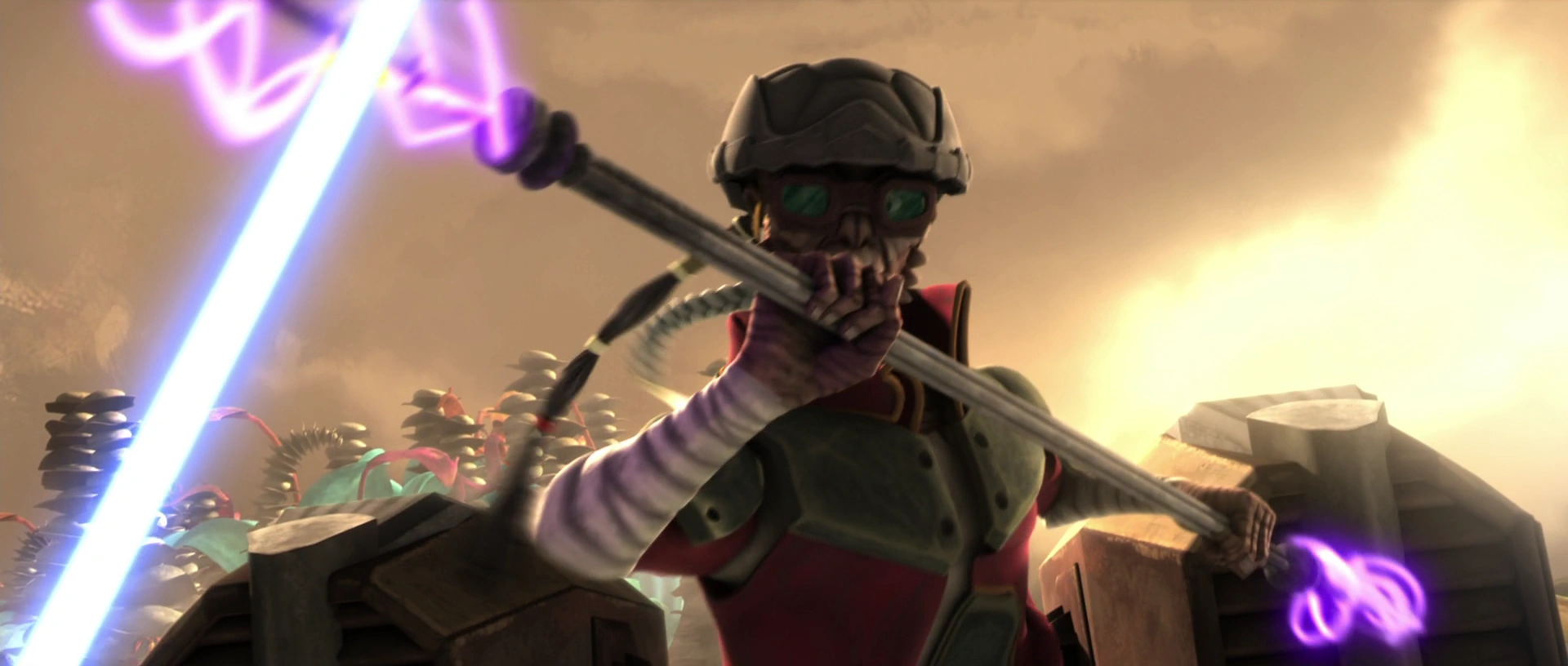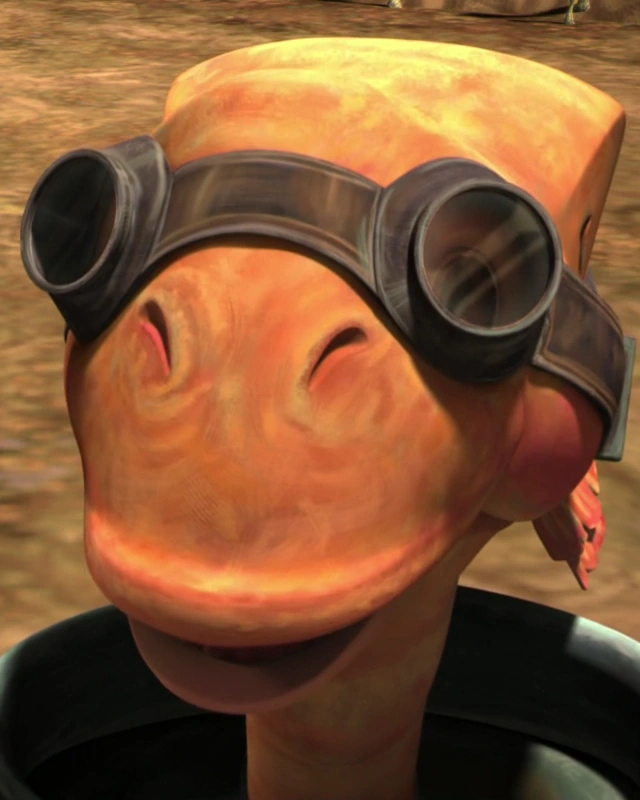Episode: "Bounty Hunters"
Series: Star Wars: The Clone Wars
Season 2, Episode 17
Original Air Date: March 27, 2010
 |
| via Wookieepedia |
(For the record, the original Marvel Star Wars comic book series did a Seven Samurai send up early in the run. The early Marvels, however, are not canon. My thoughts on that story are part of this post.)
After crash landing on the planet Felucia, Anakin, Obi-Wan and Ahsoka stumble upon what appears to be an abandoned village. Soon they discover one of the families hiding in a cellar. The Jedi are quickly surrounded by four bounty hunters who claim to be in the villagers' employ, protecting them from pirates. The Jedi join in the affair but instead of merely playing the role of hired thugs, they teach the peasants to defend themselves.
Straight-up Kurosawa so far.
There are more treats in store. Turns out, we know these pirates. They are lead by none other than my favorite Clone Wars character: Hondo Ohnaka. The Kurosawa/Hondo combination automatically makes this episode a winner for me.
*****
 |
| via Wookieepedia |
Dilanni is one of the villagers who trains to fight the pirates. He is pessimistic about their chances and appears to give up in frustration. But he comes around to save the day in the end. He is voiced by Stephen Stanton.
Stanton was born August 22, 1961 in Augsburg, West Germany. Much of his work has been as an audio double for better-known actors such as Alec Guiness, John Cusack and Bruce Willis. Most important to The Clone Wars, he is an excellent voice match for Peter Cushing. Stanton is the voice for Wilhuff Tarkin, Cushing's character in A New Hope. In "Bounty Hunters," he also voices the ill-fated pirate scout in a scene lifted directly from Seven Samurai.
He's no one-trick pony. He is also a visual effects artist, having worked on the staffs of such films as Cliffhanger, The Last of the Mohicans and Batman Returns.
If you would care to join us for all or part of our travels, sign on to the list below. Please visit the other participants today. Next week: "The Zillo Beast."
Star Wars the Animated Series how cool is that? I never even knew it existed until now.
ReplyDeleteVery different from Star Trek's TAS, but then 30+ years will do that. One thing they have in common, and Andrew has written more about this regarding Clone Wars: both work better for an adult audience than a child audience.
DeleteI would have liked the nod better if the "teaching the villagers to defend themselves" hadn't become such a thing.
ReplyDeleteThe action scenes in 7 Samurai are great but to me, the most interesting part of the story is the complicated relationship that develops between the samurai and the villagers. Bounty Hunters barely scratches the surface of that complexity, hard to do more in 22 minutes.
DeleteThis sounds so interesting to me, I am a big fan of Akira Kurosawa, I will jump ahead and find this story.
ReplyDeleteI really enjoy these posts that you and Andrew are doing.
cheers, parsnip
Which Kurosawa film do you like best?
DeleteI didn't even know there was such a thing as an audio double. Makes sense! Very interesting bio. :)
ReplyDelete~Jess
Me neither, and yet it makes sense. If you need to do touch-up work in post-production, it's helpful to have good mimics around.
Delete